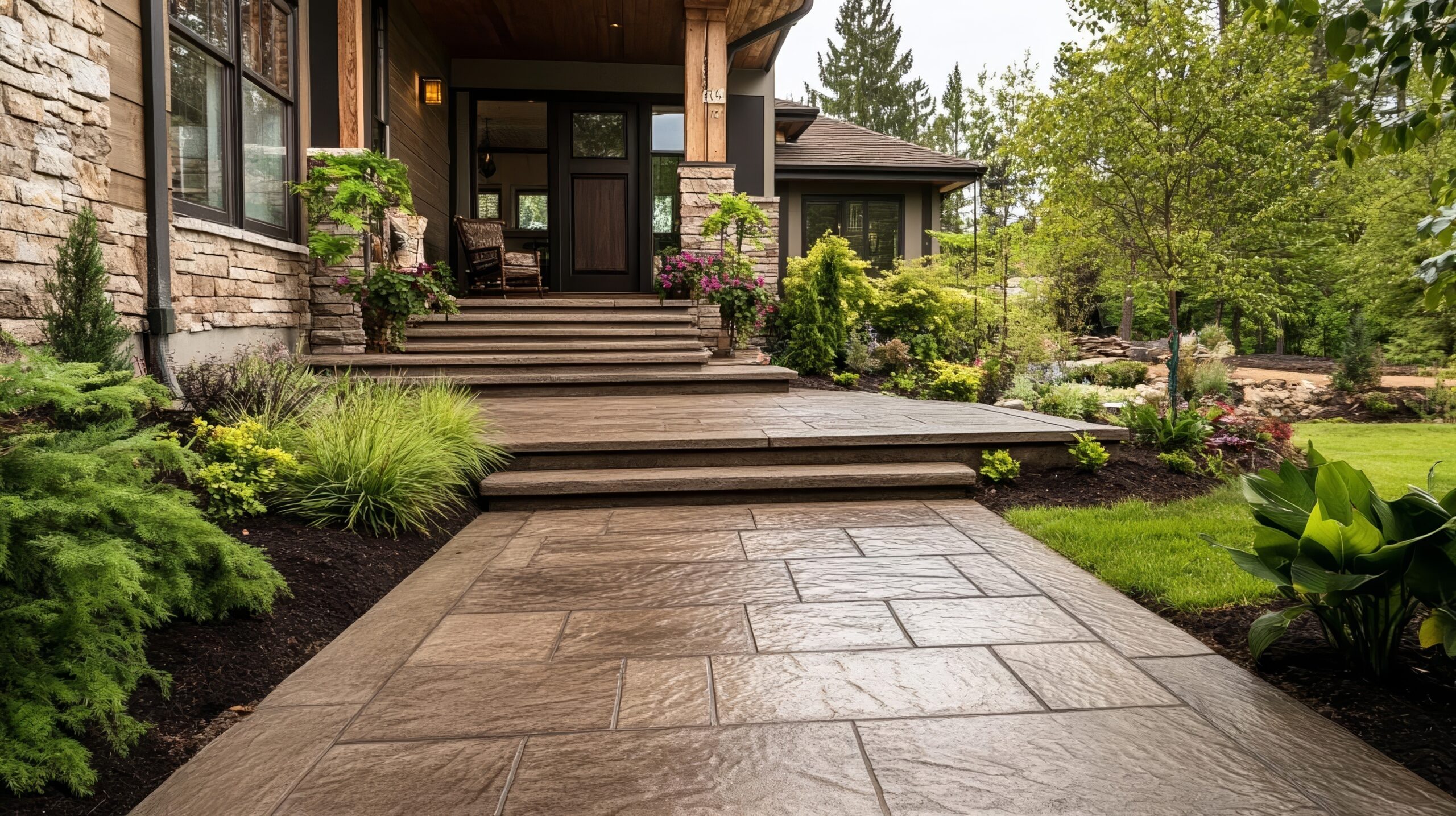Concrete has evolved far beyond its utilitarian origins to become a sophisticated design element for modern homes. Today’s contemporary driveway designs and patio solutions offer homeowners a wealth of aesthetic options that combine durability with striking visual appeal. This article explores innovative modern concrete finishes that elevate exterior spaces from merely functional to architecturally significant. From sleek polished surfaces to custom-colored applications, these cutting-edge techniques can transform your home’s exterior while maintaining concrete’s practical benefits.
The Evolution of Architectural Concrete
Architectural concrete has undergone a remarkable transformation in recent decades. No longer just the gray, utilitarian material of industrial settings, today’s concrete applications offer sophisticated aesthetics worthy of high-end residential projects. Modern concrete finishes now incorporate specialized aggregates, integral coloring, unique texturing techniques, and innovative sealers that create distinctive visual effects while enhancing durability. These advancements have positioned concrete as a premium material for contemporary home exteriors, with applications extending from walkways and patios to decorative walls and landscape features.
The versatility of modern concrete allows it to complement various architectural styles while providing exceptional performance in different climate conditions. Designers and homeowners increasingly recognize concrete’s ability to create clean lines and minimalist surfaces that define contemporary residential design. Additionally, concrete’s thermal mass properties provide practical benefits beyond aesthetics, helping regulate temperature around your home and potentially reducing energy costs.
Polished Concrete for Sophisticated Outdoor Living
A polished concrete patio represents the pinnacle of contemporary outdoor surface treatments. This finish transforms ordinary concrete into a smooth, reflective surface reminiscent of natural stone but with greater durability and lower maintenance requirements. The polishing process involves gradually grinding the concrete surface with progressively finer diamond-embedded pads until achieving the desired level of sheen – from subtle satin to high-gloss mirror finishes.
Beyond its striking appearance, polished concrete offers practical advantages for outdoor living spaces. The densified surface resists staining, requires minimal maintenance, and stands up to heavy furniture without damage. For enhanced visual interest, many homeowners incorporate decorative aggregates like recycled glass, marble chips, or river stones that become visible after polishing. These additions create unique, customized patterns that elevate a simple patio into a sophisticated outdoor extension of your interior living space.
Contemporary Driveway Design Innovations
Your driveway creates critical first impressions of your home, making it an ideal canvas for modern concrete finishes. Contemporary driveway design has moved far beyond basic broom finishes toward sophisticated treatments that complement architectural features. Exposed aggregate techniques, where the top layer of cement paste is removed to reveal decorative stones within the concrete, create textured surfaces with natural variation and slip resistance.
Another trending option is the stamped concrete driveway with modern geometric patterns rather than traditional brick or stone imitations. These clean, precise designs align perfectly with contemporary architecture. For the ultimate in luxury driveway surfaces, honed concrete offers a matte finish that’s sophisticated without the high reflectivity of fully polished surfaces. Many homeowners are now working with professionals from sites like AskHomey to find contractors who specialize in these specialized concrete applications.
Cutting-Edge Color Techniques
Color innovation represents one of the most exciting developments in modern concrete finishes. Beyond simple gray, today’s architectural concrete can be produced in virtually any shade through integral coloring (added during mixing) or topical staining processes. Integral coloring offers the advantage of consistent color throughout the material, ensuring that minor surface damage won’t reveal different coloration underneath.
For more dynamic effects, reactive stains penetrate the concrete surface and create variegated, organic-looking color patterns through chemical reactions with the concrete’s compounds. These stains produce earthy tones with subtle variations similar to natural stone. Alternatively, water-based concrete dyes offer vibrant color options including blues, greens, and purples not achievable with reactive stains. For the ultimate in contemporary sophistication, many designers now specify white concrete with minimal aggregate exposure, creating bright, clean surfaces that dramatically contrast with surrounding landscape elements.
Sustainable Options in Modern Concrete
Sustainability concerns have driven significant innovation in contemporary concrete applications. Modern concrete mixes often incorporate recycled materials like crushed glass, post-industrial waste products, or reclaimed aggregates that reduce environmental impact while creating unique visual effects. Pervious concrete, which allows water to pass through to the soil below, addresses stormwater management concerns while offering an interesting textural element for driveways and walkways.
Some forward-thinking concrete manufacturers now produce carbon-sequestering concrete that actually absorbs CO2 during the curing process. These environmentally conscious options allow homeowners to achieve modern aesthetic goals while reducing their ecological footprint. The sustainability factor of modern concrete finishes adds another dimension of appeal for environmentally conscious homeowners seeking contemporary exterior solutions.
For more tips and to connect with reliable home service professionals, follow AskHomey on Facebook and Instagram.



